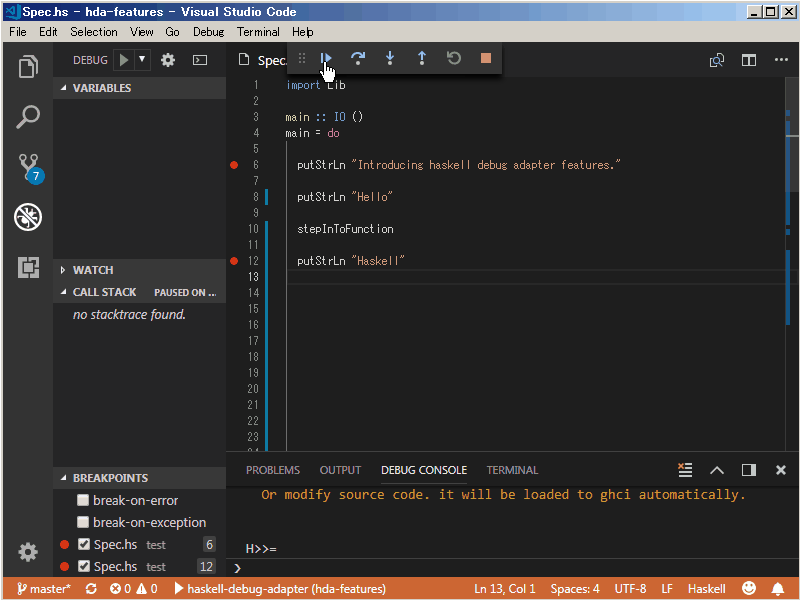


#Vscode tasks code#
So far, we have Vanilla code without any external dependency. I hope, you will get the success message in the output Window with zero warning and an error. NET Core, use “CTRL+SHIFT+B” to compile your project.
#Vscode tasks install#
NET Core installed in your machine, install it from here. You may get an error message, if you don’t have. Launch command palette by pressing F11 key and run ” dotnet restore” command to restore the packages.Now, launch VSCode and open the folder created in step one.Select empty Web proj and hit enter to get the default settings.Execute the command >npm install generator-aspnet.Once you install Yeoman (>npm install –g yo) the next step is to install generator, so that you can create your proj template.Launch command prompt and set your working directory (created in the first step).Create a test directory in your system.Please follow the link, if you would like to know more about Yeoman and doing dev environment setup first time. Setup- I am assuming that you have npm setup done and Yeoman is already installed in your dev machine. To understand the dependencies shown above in action, let’s play with VSCode.įor this, I am going to use Yeoman (package manager) to scaffold my ASP. Here is the sequence of config execution, when you perform build (CTRL+SHIFT+B) or start debugging. When you perform build or debug operation, VSCode reads those config file in a specific sequence and sets the editor environment accordingly. In this case, your folder may contain various config files (at root level).

If you are building an Enterprise level Application, it may have multiple types of projects in your solution. If there is any event trigger due to the user’s action, pop-up will be displayed to the user in the form of info, action, warning or an error message. They keep monitoring the user’s actions and identify the folder contents to provide rich editing and debugging experience. In the screen shot, given below, in the middle layer components, you can consider them like a listener. Let’s explore more and try to understand how they interact with your code.īroadly we can divide VSCode components into four categories, as given below.Īs we already discussed earlier that the editor provides some common functionalities irrespective of your target framework and technologies like multi edit, theme selection etc. Now, I think we got some idea of VSCode main components. You can imagine VSCode as a combined entity of the various components, as shown in the screenshot, given below. In this, we mainly keep those functionalities, which are specific to the targeted framework and technologies like invoking debug adapter, language Service etc. Technology and framework Specific features.These features are common across all the supported technologies and frameworks like multi-edit, plit editor, side by side editing, compare etc. If you go to VSCode getting started page (), at the left side, you can see the links for different sections. Let’s jump on VSCODE functionalities and the features. If you are not familiar with Electron, please refer to the links, given below, to know about this new technology to build desktop apps, using JS+HTML+CSS. OminiSharp and TS mainly provides rich intellisense, project dependencies and language syntax to various IDE and plugins. Monaco is the code editor, which powers VSCode by providing the editor features like validation, basic syntax colorization, side by side comparison, multi edit etc. Look at the screenshot, given below, which can give you the high level idea about the main pillars of VSCode.Įlectron is the UI framework used in VSCode for a user interface. Understand the basic technology behind VSCode
#Vscode tasks how to#
In this article, I am not going to provide much information about how to customize VSCode, but my main intention is to provide some information of VSCode, as in what are the main components it has and how your configuration deals with the editor environment.


 0 kommentar(er)
0 kommentar(er)
